Solanum lycopersicum var. cerasiforme
Do you love the idea of picking sweet, ripe tomatoes fresh from the vine but aren’t sure how to begin?
Cherry tomatoes are great plants to start with.
Rewarding for the new and experienced gardener alike, they’re wonderfully productive and easy to grow – a single plant can produce a reliable crop of bite-sized fruits from early summer until fall.

We link to vendors to help you find relevant products. If you buy from one of our links, we may earn a commission.
Hearty and vigorous plants, the pretty fruits grow in large clusters in a rainbow of colors – chocolate, mahogany, orange, red, yellow, almost black, and pink, in a solid hue or even with tiger stripes.
And the flavors of sun-warmed fruit right off the vine are absolutely delicious, from mild to sweet to tangy.
Because of the small fruit size, typically one to two inches, these high yielding plants often bear fruit in just 55 to 65 days, with some ready for harvest in as little as 45 days. However, there are those that can take up to 80 days to mature as well.
They also perform well in containers, so they can be grown just about anywhere, even on small balconies or decks.
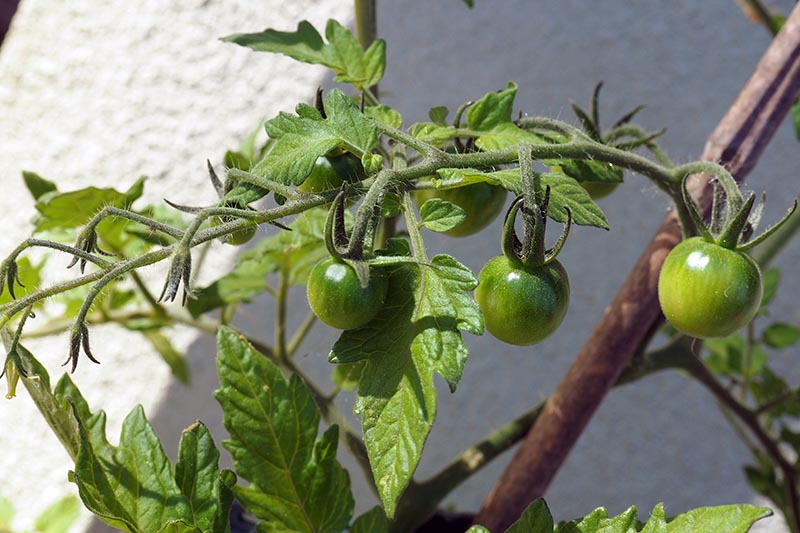
Sound like something you’d like to try? Then join us now for our best tips on growing cherry tomatoes.
Here’s what we’ll cover:
What You’ll Learn
What Are Cherry Tomatoes?
Solanum lycopersicum var. cerasiforme are thought to be the direct descendants of S. pimpinellifolium – the wild ancestor of today’s domesticated varieties.
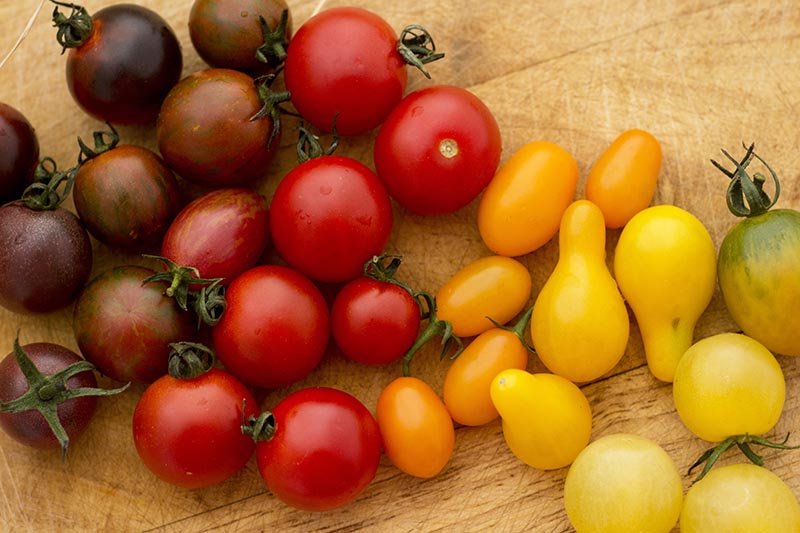
This ancient forebearer was a weedy plant, with small, blueberry-sized fruit. It traveled from the northern Andes into Mexico, and at some point, morphed into a plant with larger fruits that were suitable for domestication.
Today’s varieties still bear small, globular fruits, although they typically measure about a half-inch to two inches in size. Those with an oblong shape are called grape tomatoes, but they abide in the same classification.
Varieties are classified into determinate and indeterminate growth habits, and several determinate ones are bred for compact growth in small spaces.
And like the standard sized Solanum plants, cultivation is divided into heirloom or hybrid divisions.
However, there’s also a new breed on the block. Let’s take a look at that first.
Heirloom Hybrids
It sounds like an oxymoron, but heirloom hybrids are a new breed of tomato created by crossing two heirloom varieties, or an heirloom with a modern hybrid cultivar.
They’re bred for qualities such as best color, flavor, shape, and texture as well as disease resistance, early fruiting, and vigor – often using only heirloom parents.
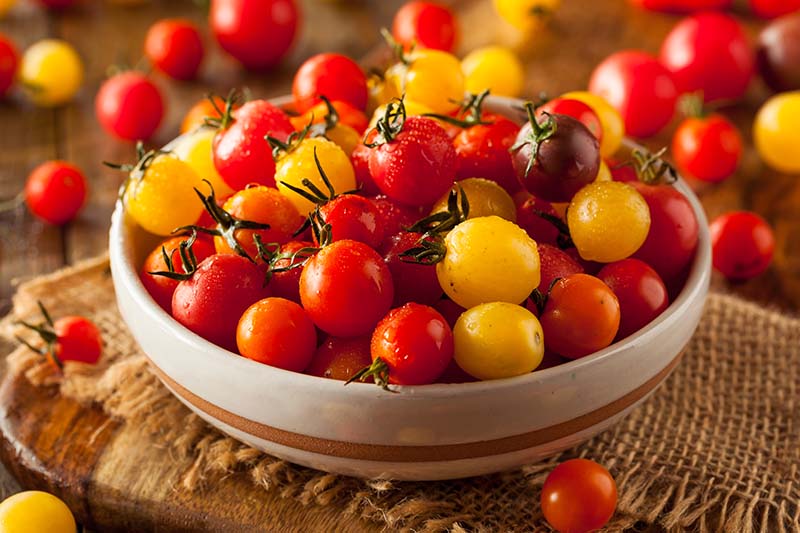
This results in plants with outstanding performance along with the deep, rich flavor of heirlooms. And flavor is what many folks find lacking in standard hybrids.
If you’d like to try out one of the new breed, ‘Black Pearl’ is an heirloom hybrid with a deep, rich mahogany color and full, complex flavor – sweet with a rich, tangy bite.
Seeds can be purchased at Burpee.
Seeds or Seedlings?
To grow your plants from seed, they need to be started indoors approximately six weeks before your last frost date (LFD).
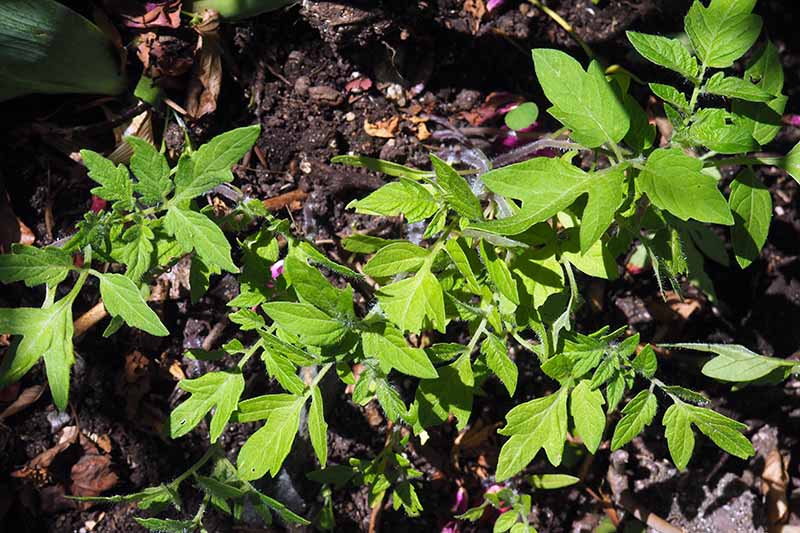
Transplanting them outdoors usually happens about six weeks after your last frost date, or when the plants are around 12 weeks old.
You’ll need to collect your own seed from heirloom plants (seeds from hybrids won’t necessarily be true to the parents) or purchase seeds. Seeds can be purchased from your local nursery, online sources, and seed catalogs, which usually arrive in January.
And if you’re new to starting your own, our guide on how to grow tomatoes from seed has detailed instructions in six easy steps.
Alternatively, you can wait until spring arrives and purchase seedlings from your local nursery or garden shop.
Planting Gear
Once your seedlings have been hardened off and are ready for the great outdoors, it’s time to gather up your planting gear.
And don’t be fooled by the size of the fruit – these plants are vigorous and can grow large and bushy.
Unless you’ve chosen dwarf or patio varieties, the fruit-laden branches can be heavy and require support in the form of cages or stakes.
This helps to keep fruit off the ground and prevents branches from breaking under the weight – even with determinate varieties.
Cages come in different sizes and shapes and need to be sturdy enough not to buckle under a large plant, like this set of five galvanized hoop cages available at Wayfair.
For reference, here’s a list of everything you’ll need to get growing:
- Cherry or grape tomato plants
- Depending on the variety, cages or stakes are needed for support along with plant clips, twine, or Velcro ties
- If planting in containers, they need to be at least 5 gallons in size and have drainage holes (a pot 12 inches in diameter and 12 inches tall holds approximately 5 gallons)
- Bone meal to add to the planting hole for strong root growth
- Potting soil mix if planting in containers
- Plant food (use a balanced all-purpose blend, or an 18-18-21 NPK formula for Solanums)
For more detailed information on planting or container cultivation, be sure to check our grow and care guide for tomatoes.
Growing Tips
Cherry tomatoes are typically robust and easy to cultivate, but there are a few things you can do to assist with a bountiful harvest:
- Plants are happiest in soil that’s well-draining with a pH level of 6.2 to 6.5.
- They require a full sunlight location – a minimum of six hours per day.
- Refrain from planting until the chance of frost is past. Use a cloche or plant cover to protect new seedlings if adverse weather sets in (i.e. cold, wet, and windy conditions).
- Be sure to leave ample room between planting holes – the fruit may be small, but the plants can grow big and bushy.
- Set your cages or stakes in place when planting to avoid disturbing the roots later.
- If you’re growing container plants on a balcony, tie the stems to the railing to eliminate the need for cages or stakes.
- When planting, pluck the lowest stems and shoots from the main stalk. Then bury the plant close to the lowest remaining set of leaves, one to two inches away. The buried, stripped stalk will produce more roots for stronger growth.
- To prevent future problems like blossom end rot, mix a small handful of lime or Epsom salts into the planting hole. Both increase magnesium levels, which can be blocked by high concentrations of calcium and potassium in the soil.
- Pinch out suckers as they appear, to redirect energy into fruit production. These are the small branches that appear in the “V” formed between the main stalk and branches.
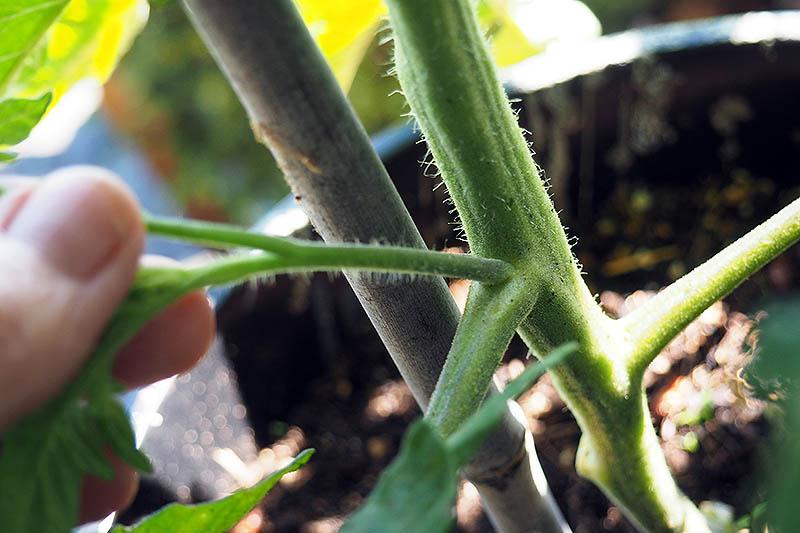
- After flowers appear, feed plants growing in the ground biweekly with a balanced fertilizer, or a tomato formula of 18-18-21.
- Container plants require more frequent fertilizing and may need to be fed weekly. If so, use a diluted, half-strength formula to compensate for the increased frequency of application.
- Plants perform best with a deep weekly watering rather than frequent light watering.
- If space is an issue, look for dwarf or patio varieties. These are determinate plants bred for compact growth. For details on the differences, read our guide to learn more about determinate and indeterminate varieties.
Harvesting
Harvest when the fruits have changed to their expected color. This can be from six to 10 weeks after pollination, depending on the weather and the varieties you’ve chosen.

When ripe, fruit will come away from the stem with a gentle tug or twist.
Pick ripe fruit every day or two to encourage a continuous bloom set and greater production.
Varieties to Select
For ideas on what varieties would best suit your needs, check our review of 17 of the best cherry tomatoes.
In the meantime, here are a few suggestions to get you started:
Baby Boomer
A compact hybrid variety, ‘Baby Boomer’ delivers a big payload with yields of over 300 red, one-inch fruits per plant, produced all summer long and right until first frost.
Fruits mature in 50 to 55 days on determinate plants that reach 20 to 25 inches.
Pick up seeds or three-packs of plants at Burpee.
Black Cherry
‘Black Cherry’ is an heirloom with a rich heritage that shows in its complex, sweet flavor and firm texture.
The one-inch fruits ripen to a deep, dark mahogany brown, and stems are laden throughout the hot summer months.
Indeterminate plants grow to 60 inches and fruit matures in 64 days. This variety is naturally disease resistant.
You can purchase seeds at Eden Brothers.
Sungold
Perhaps the most popular cherry tomato, ‘Sungold’ is a highly prolific vine with large clusters of tangerine-orange fruits.
Delicious fresh off the vine, on the grill, and in salads. An indeterminate plant, fruits ripen in 57 days and vines grow 48 to 60 inches.
Seeds can be purchased at True Leaf Market.
Recipes and Cooking Ideas
Don’t panic when these prolific plants deliver a bumper crop!
Instead, let your homegrown harvest shine. Tossed into salads or made into salsa or a fresh marinara, used as a tasty topping for homemade pizza, or cooked down into preserves, sweet cherry tomatoes are one of the most delicious rewards of the summer garden.
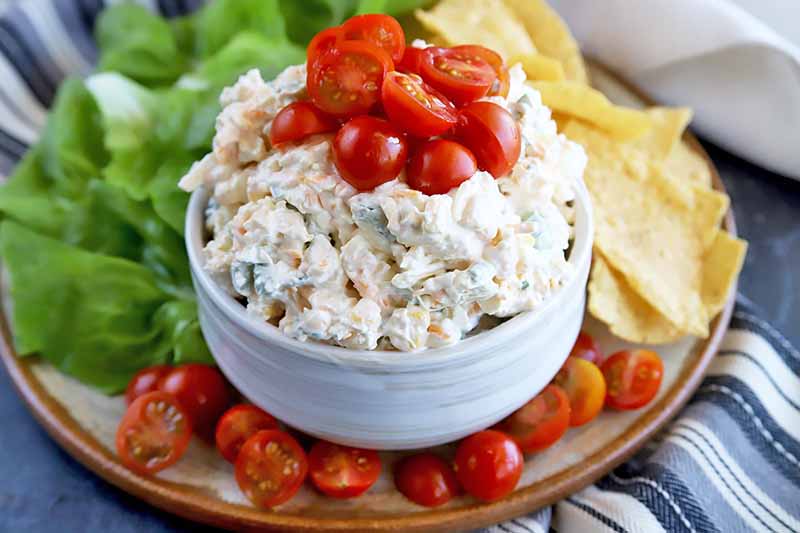
Try this corn and cream cheese dip with cherry tomatoes from our sister site, Foodal, for a tasty appetizer.
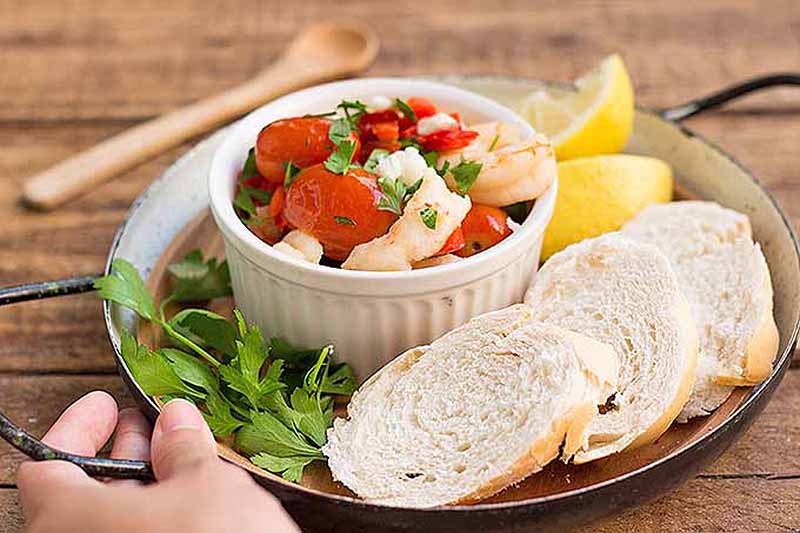
Roasted cherry tomatoes with shrimp and feta, also from Foodal, make a tasty entree option.
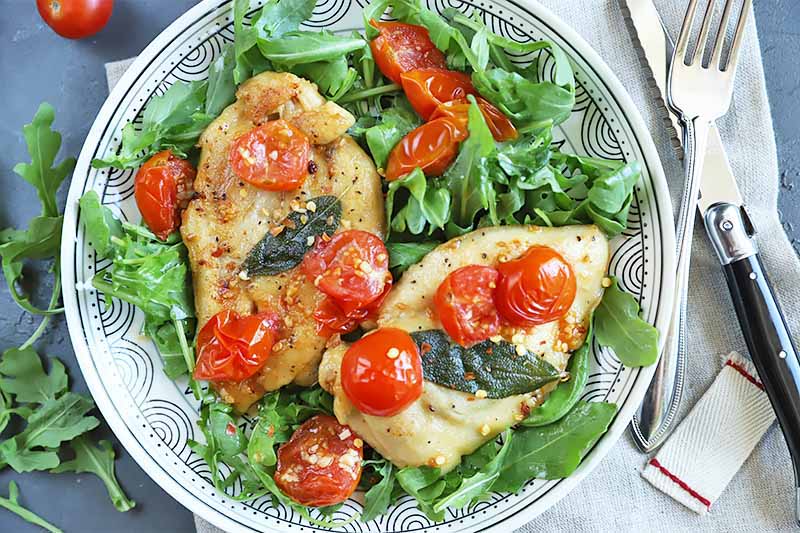
Or, if you’re not in the mood for seafood, give these chicken cutlets with tomatoes a whirl on a busy weeknight, also from Foodal.
Delicious Bite-Sized Gems
Prolific, hardy, and reliable, cherry tomatoes are an easy and fulfilling introduction to growing your own Solanums.
Choose varieties for containers or the garden, give indeterminate varieties some support, and follow our tips for an abundance of delicious bite-sized fruits all summer.
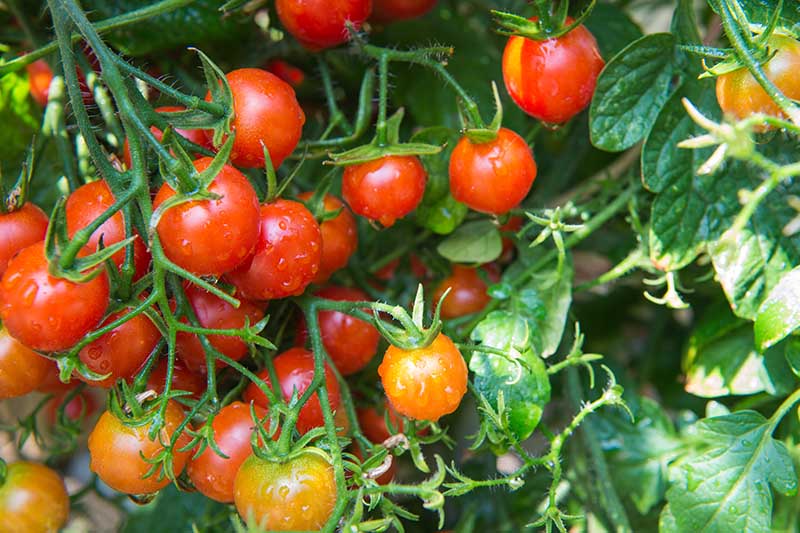
Do you folks have any favorite varieties you’d like to recommend? Drop us a note in the comments below.
And for more tomato knowledge, add these growing guides to your reading list:
- The Top 10 Reasons to Love Tomatoes and Add More to Your Diet
- 15 of the Best Canning Tomatoes You Should Grow
- How To Identify, Prevent, and Treat Common Tomato Diseases
- How to Make Tomatoes Turn Red When They Refuse to Ripen on the Vine
Photos by Felicia Lim, Lorna Kring, and Meghan Yager. © Ask the Experts, LLC. ALL RIGHTS RESERVED. See our TOS for more details. Uncredited photos: Shutterstock.
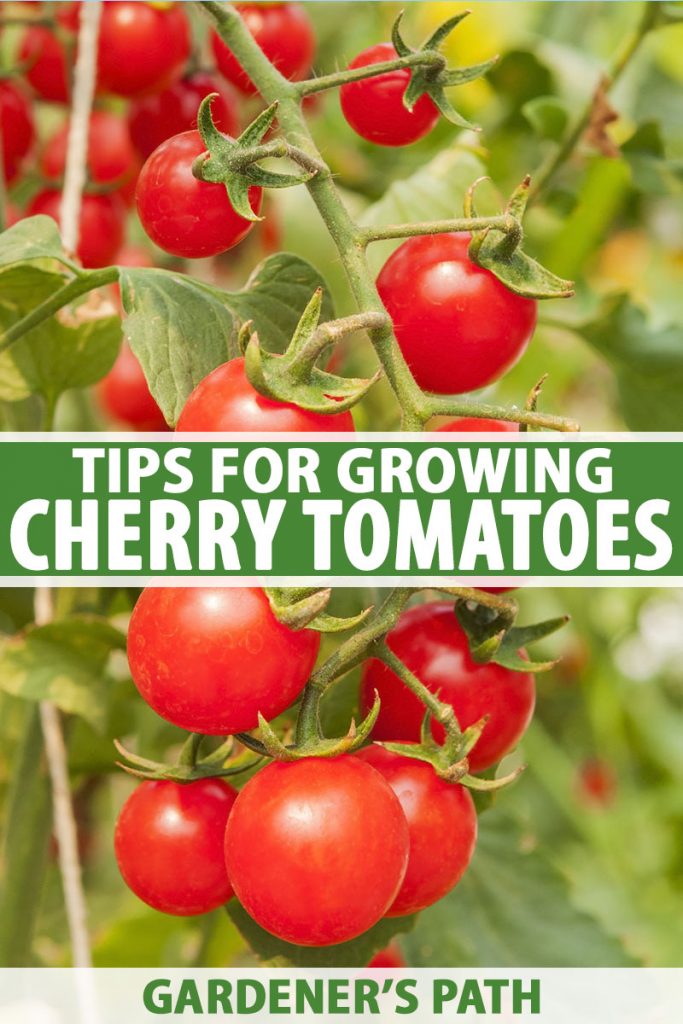
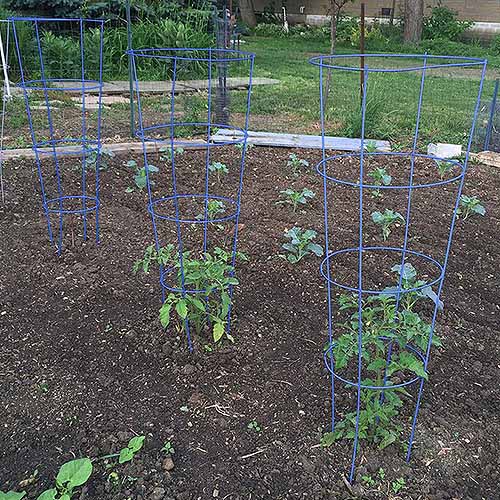

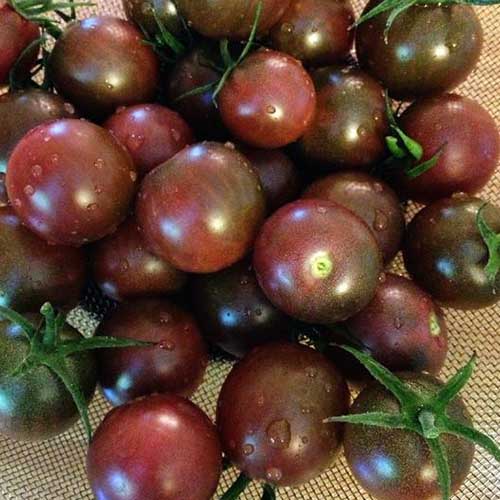
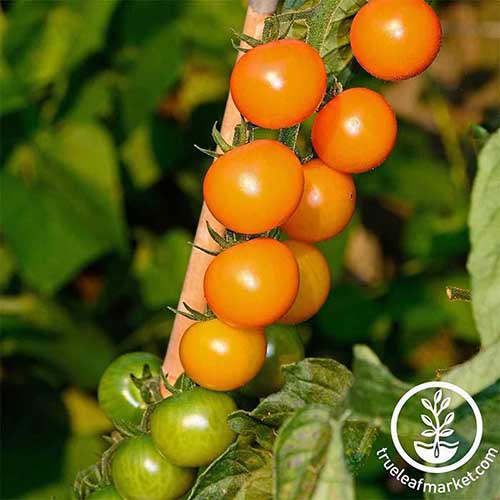
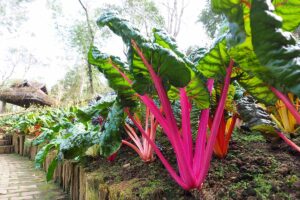
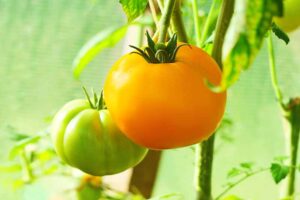

Very nice, I appreciated your guidance
Glad you found it useful Ebenezer!